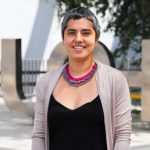Proyectos
- FIC IDI 40048442-0
- Mayo 2023 - Mayo 2026
En EjecuciónGobierno Regional - GORE
Transferencia de innovación social: inclusión y turismo
[vc_section el_class="container mx-auto align-items-center circle--pattern" css=".vc_custom_1648956589196{padding-top: 3rem !important;}"][vc_row el_class="pb-5"][vc_column][vc_wp_custommenu nav_menu="6"][uoh_breadcrumb_component automatic_breadcrumb="true"][uoh_title_component title_dropdown="big" title_decorator="true"]{{title}}[/uoh_title_component][vc_column_text css=""]Consolidar y fortalecer una nueva red de nodos de innovación social que promueva la inclusión socio laboral en personas con alguna discapacidad, personas mayores, mujeres y personas en situación de vulnerabilidad enfocada en los sectores económicos priorizados en la Estrategia de Desarrollo Regional 2011-2020 (EDRE) y de innovación, priorizando el sector turístico, y agroalimentario y la puesta en valor de la identidad cultural.[/vc_column_text][/vc_column][/vc_row][/vc_section][vc_section css=".vc_custom_1649209804184{background-color: #f6faff !important;}" el_class="p-md-0 pt-md-5"][vc_row el_class="container mx-auto align-items-center p-md-0 pt-5"][vc_column el_class="p-0"][/vc_column][/vc_row][/vc_section][vc_section css=".vc_custom_1649210787516{background-color: #f6faff !important;}" el_class="p-md-0 pt-md-5 pb-md-5"][vc_row el_class="container mx-auto align-items-center"][vc_column][/vc_column][/vc_row][/vc_section]
Responsable Alterno
- FIC IDI 40048442-0
- Mayo 2023 - Mayo 2026
En EjecuciónGobierno Regional - GORE
Transferencia de innovación social: inclusión y turismo
[vc_section el_class="container mx-auto align-items-center circle--pattern" css=".vc_custom_1648956589196{padding-top: 3rem !important;}"][vc_row el_class="pb-5"][vc_column][vc_wp_custommenu nav_menu="6"][uoh_breadcrumb_component automatic_breadcrumb="true"][uoh_title_component title_dropdown="big" title_decorator="true"]{{title}}[/uoh_title_component][vc_column_text css=""]Consolidar y fortalecer una nueva red de nodos de innovación social que promueva la inclusión socio laboral en personas con alguna discapacidad, personas mayores, mujeres y personas en situación de vulnerabilidad enfocada en los sectores económicos priorizados en la Estrategia de Desarrollo Regional 2011-2020 (EDRE) y de innovación, priorizando el sector turístico, y agroalimentario y la puesta en valor de la identidad cultural.[/vc_column_text][/vc_column][/vc_row][/vc_section][vc_section css=".vc_custom_1649209804184{background-color: #f6faff !important;}" el_class="p-md-0 pt-md-5"][vc_row el_class="container mx-auto align-items-center p-md-0 pt-5"][vc_column el_class="p-0"][/vc_column][/vc_row][/vc_section][vc_section css=".vc_custom_1649210787516{background-color: #f6faff !important;}" el_class="p-md-0 pt-md-5 pb-md-5"][vc_row el_class="container mx-auto align-items-center"][vc_column][/vc_column][/vc_row][/vc_section]
Co-Investigador/a
- FIC IDI 40048442-0
- Mayo 2023 - Mayo 2026
En EjecuciónGobierno Regional - GORE
Transferencia de innovación social: inclusión y turismo
[vc_section el_class="container mx-auto align-items-center circle--pattern" css=".vc_custom_1648956589196{padding-top: 3rem !important;}"][vc_row el_class="pb-5"][vc_column][vc_wp_custommenu nav_menu="6"][uoh_breadcrumb_component automatic_breadcrumb="true"][uoh_title_component title_dropdown="big" title_decorator="true"]{{title}}[/uoh_title_component][vc_column_text css=""]Consolidar y fortalecer una nueva red de nodos de innovación social que promueva la inclusión socio laboral en personas con alguna discapacidad, personas mayores, mujeres y personas en situación de vulnerabilidad enfocada en los sectores económicos priorizados en la Estrategia de Desarrollo Regional 2011-2020 (EDRE) y de innovación, priorizando el sector turístico, y agroalimentario y la puesta en valor de la identidad cultural.[/vc_column_text][/vc_column][/vc_row][/vc_section][vc_section css=".vc_custom_1649209804184{background-color: #f6faff !important;}" el_class="p-md-0 pt-md-5"][vc_row el_class="container mx-auto align-items-center p-md-0 pt-5"][vc_column el_class="p-0"][/vc_column][/vc_row][/vc_section][vc_section css=".vc_custom_1649210787516{background-color: #f6faff !important;}" el_class="p-md-0 pt-md-5 pb-md-5"][vc_row el_class="container mx-auto align-items-center"][vc_column][/vc_column][/vc_row][/vc_section]
Investigador/a Responsable
- FIC IDI 40048442-0
- Mayo 2023 - Mayo 2026
En EjecuciónGobierno Regional - GORE
Transferencia de innovación social: inclusión y turismo
[vc_section el_class="container mx-auto align-items-center circle--pattern" css=".vc_custom_1648956589196{padding-top: 3rem !important;}"][vc_row el_class="pb-5"][vc_column][vc_wp_custommenu nav_menu="6"][uoh_breadcrumb_component automatic_breadcrumb="true"][uoh_title_component title_dropdown="big" title_decorator="true"]{{title}}[/uoh_title_component][vc_column_text css=""]Consolidar y fortalecer una nueva red de nodos de innovación social que promueva la inclusión socio laboral en personas con alguna discapacidad, personas mayores, mujeres y personas en situación de vulnerabilidad enfocada en los sectores económicos priorizados en la Estrategia de Desarrollo Regional 2011-2020 (EDRE) y de innovación, priorizando el sector turístico, y agroalimentario y la puesta en valor de la identidad cultural.[/vc_column_text][/vc_column][/vc_row][/vc_section][vc_section css=".vc_custom_1649209804184{background-color: #f6faff !important;}" el_class="p-md-0 pt-md-5"][vc_row el_class="container mx-auto align-items-center p-md-0 pt-5"][vc_column el_class="p-0"][/vc_column][/vc_row][/vc_section][vc_section css=".vc_custom_1649210787516{background-color: #f6faff !important;}" el_class="p-md-0 pt-md-5 pb-md-5"][vc_row el_class="container mx-auto align-items-center"][vc_column][/vc_column][/vc_row][/vc_section]
Co-Investigador/a
- 1230872
- Abril 2023 - Diciembre 2025
En EjecuciónAgencia Nacional de Investigación y Desarrollo - ANID
Non-thermal technologies for Highly Hazardous Pesticides in fresh vegetables: Study of Processing factors and Risk Assessment according their Maximum Residue Levels of Chile.
[vc_section el_class="container mx-auto align-items-center circle--pattern" css=".vc_custom_1648956589196{padding-top: 3rem !important;}"][vc_row el_class="pb-5"][vc_column][vc_wp_custommenu nav_menu="6"][uoh_breadcrumb_component automatic_breadcrumb="true"][uoh_title_component title_dropdown="big" title_decorator="true"]{{title}}[/uoh_title_component][vc_column_text css=""]In modern agriculture the production of fresh vegetables requires the use of pesticides to control pest and
diseases during the vegetation period as pre- or post-harvest treatment. However, the improper use of
pesticides due to overuse, harvesting before the Pre-Harvest Interval (PHI), can lead a high number of
pesticides residues increasing the exposure and impacts on human health. Different scientific evidences and
official data from the national surveillance shown that pesticides in Chile are not enough regulated and
monitored for their import, registration, agricultural and domestic use. In addition, scientific papers have
shown serious concerns due to presence of Highly Hazardous Pesticides (HHPs) in highly consumed fresh
vegetables in Chile from farmers, food street markets and supermarkets mainly in the Metropolitan Region.
Currently pesticide residues represent a national concern due to serious transgression of Chilean Maximum
Residue Levels (MRLs) and number and concentrations of HHPs. The HHPs are acknowledged to present high
levels of acute or chronic hazards to human health and environment under the criteria of the World Health
Organization (WHO), the Food and Agriculture Organization of the United Nations (FAO), the Globally
Harmonized System of Classification and Labelling of Chemical (GHS), and the international agreements or
conventions (Rotterdam, Stockholm or Paris). There is a relevant need to support and provide to official
authorities with novel and high-quality information of mitigation strategies for reducing the presence of HHPs
residues in food. Also, the methodologies to obtain processing factors and to evaluate risk assessment are
necessary for modify the current regulation to restrict or ban the authorization of HHPs in Chile. On another
hand, non-thermal technologies for reducing pesticide residues appears as a suitable strategy to reduce the
presence of pesticide residues in fresh food. Therefore, the main objective is to study the effect of nonthermal technologies on highly hazardous pesticides residues on fresh vegetables including their associated
processing factors and risk assessment according the Maximum Residue Levels of pesticides in Chile. Two
specific aims have been proposed; to determine the effects of non-thermal technologies on highly hazardous
pesticides in fresh vegetables and their corresponding processing factors and maximum residue levels; to
evaluate health risk assessment of highly hazardous pesticides according the processing factors and
maximum residue levels. The method of extraction will be "quick, easy, cheap, effective, rugged and safe"
QuEChERS for HHPs multiresidues according to the guideline SANTE 2017 provided by European Commission.
The quantification for HHPs residues in leafy vegetables (lettuce and chard) and solanaceous vegetables
(tomatoes and peppers) will be using Liquid and Gas Chromatography (HPLC-MS/MS and GC-MS/MS) based
on the guideline SANTE 2017 provided by European Commission. Different parameters will be validated such
as %RSD, uncertainty, limit of detection and quantification (LOD, LOQ). During the fourth year of project
each season vegetables will be cultivated under good agricultural practices (GAP) in the Experimental Field
Talagante at Universidad de Las Americas (UDLA). Twenty HHPs will be used for their high presence and
transgression of the Maximum Residue Levels (MRLs) of Chile at the National Surveillance of Agricultural and
Livestock Services (SAG) reported in the last five years. The applications will be set up at the field rate (FR)
proposed in the labelling of the products and doble field rate (2FR) to emulate the overuse of pesticides by
farmers with the purpose to have high levels of HHPs for the non-thermal technologies. The vegetables will
be transported under refrigerated conditions (-4ºC) to the Laboratory of Chemistry at UDLA. The non-thermal
technologies were selected for their novelty and promising results for reducing pesticides residues: Cold
Plasma, UV light, ultrasound and ozone (O3) will be used at two concentrations each one by three replicates
for each treatment/vegetable. Controls with or without HHPs will be used to compare. After use non-thermal
technologies, the processing factors will be determinate for each vegetable/HHPs/non-thermal technology.
The risk assessment will be evaluated through the estimated daily intake (EDI), the Hazard quotient (HQ)
and the chronic hazard index (cHI) for each HHPs. The pesticide residue intake models will be setup using
data by the average body of Chileans, age, gender, and a mixture of data from the model PRIMo V 3.1 which
is used by the European Food safety Authority (EFSA). The results of this project should be used to increase
the knowledge of non-thermal technologies to decrease the serious levels of HHps in the most consumed
fresh vegetables of Chile, reduce the number of transgressions of the Chilean MRLs, and decrease the hazard
of HHPs to human health. Likewise, to support the decision-making process of national authorities for the
restriction or ban of Highly Hazardous Pesticides.[/vc_column_text][/vc_column][/vc_row][/vc_section][vc_section css=".vc_custom_1649209804184{background-color: #f6faff !important;}" el_class="p-md-0 pt-md-5"][vc_row el_class="container mx-auto align-items-center p-md-0 pt-5"][vc_column el_class="p-0"][/vc_column][/vc_row][/vc_section][vc_section css=".vc_custom_1649210787516{background-color: #f6faff !important;}" el_class="p-md-0 pt-md-5 pb-md-5"][vc_row el_class="container mx-auto align-items-center"][vc_column][/vc_column][/vc_row][/vc_section]
Co-Investigador/a
- 1230860
- Abril 2023 - Abril 2026
En EjecuciónAgencia Nacional de Investigación y Desarrollo - ANID
Cazadores recolectores de la cuenca del Lago Tagua Tagua (Región de OHiggins): evaluando el uso del espacio, movilidad y territorialidad entre el Pleistoceno final y el Holoceno Tardío (ca. 13000 3000 años cal AP).
[vc_section el_class="container mx-auto align-items-center circle--pattern" css=".vc_custom_1648956589196{padding-top: 3rem !important;}"][vc_row el_class="pb-5"][vc_column][vc_wp_custommenu nav_menu="6"][uoh_breadcrumb_component automatic_breadcrumb="true"][uoh_title_component title_dropdown="big" title_decorator="true"]{{title}}[/uoh_title_component][vc_column_text css=""]Arqueología y Paleontología del antiguo Lago de Tagua Tagua[/vc_column_text][/vc_column][/vc_row][/vc_section][vc_section css=".vc_custom_1649209804184{background-color: #f6faff !important;}" el_class="p-md-0 pt-md-5"][vc_row el_class="container mx-auto align-items-center p-md-0 pt-5"][vc_column el_class="p-0"][/vc_column][/vc_row][/vc_section][vc_section css=".vc_custom_1649210787516{background-color: #f6faff !important;}" el_class="p-md-0 pt-md-5 pb-md-5"][vc_row el_class="container mx-auto align-items-center"][vc_column][/vc_column][/vc_row][/vc_section]
Co-Investigador/a
- FONDO DE INVESTIGACIÓN INTERDISCIPLINARIA
- Abril 2023 - Abril 2026
En EjecuciónAgencia Nacional de Investigación y Desarrollo - ANID
El Derecho al refugio en Chile. Un estudio sobre su consagración normativa y aplicación práctica
[vc_section el_class="container mx-auto align-items-center circle--pattern" css=".vc_custom_1648956589196{padding-top: 3rem !important;}"][vc_row el_class="pb-5"][vc_column][vc_wp_custommenu nav_menu="6"][uoh_breadcrumb_component automatic_breadcrumb="true"][uoh_title_component title_dropdown="big" title_decorator="true"]{{title}}[/uoh_title_component][vc_column_text css=""]Estudio sobre la consagración normativa y aplicación práctica del refugio en Chile[/vc_column_text][/vc_column][/vc_row][/vc_section][vc_section css=".vc_custom_1649209804184{background-color: #f6faff !important;}" el_class="p-md-0 pt-md-5"][vc_row el_class="container mx-auto align-items-center p-md-0 pt-5"][vc_column el_class="p-0"][/vc_column][/vc_row][/vc_section][vc_section css=".vc_custom_1649210787516{background-color: #f6faff !important;}" el_class="p-md-0 pt-md-5 pb-md-5"][vc_row el_class="container mx-auto align-items-center"][vc_column][/vc_column][/vc_row][/vc_section]
Co-Investigador/a
- 3230676
- Abril 2023 - Marzo 2026
En EjecuciónAgencia Nacional de Investigación y Desarrollo - ANID
LANDSLIDES IN CENTRAL CHILE (32.5°S 35°S): THE ROLE OF THE MEGA DROUGHT AND EARTHQUAKES IN HAZARD ASSESSMENT AND DISASTER PREVENTION
[vc_section el_class="container mx-auto align-items-center circle--pattern" css=".vc_custom_1648956589196{padding-top: 3rem !important;}"][vc_row el_class="pb-5"][vc_column][vc_wp_custommenu nav_menu="6"][uoh_breadcrumb_component automatic_breadcrumb="true"][uoh_title_component title_dropdown="big" title_decorator="true"]{{title}}[/uoh_title_component][vc_column_text css=""]Landslides are an important landscape forming process, providing the main mechanism for sediment release from slopes to permit transportation through the fluvial system. Thus, in advecting mountain chains, landslides play a key role in allowing the development of a long-term dynamic equilibrium between uplift and erosion, and in reducing slopes to their threshold angle. In doing so, landslides can directly impact humans. Unfortunately, fatalities and material losses caused by landslides concentrate in areas with high degrees of marginalization, which indicates that the most marginalized populations are the most prone to experience the negative effects of landslides. The total landslide death toll in Chile is 1010 between 1928 and 2017, 54% of them in Central Chile (32.5°S 35°S). A key question for the proposed research is what are the controlling factors affecting the temporal and spatial distribution of landslides in Central Chile (32.5°S-35°S)? The assessment of this question is relevant considering that landslides are an important natural hazard driven mainly by strong earthquakes and heavy rainfall, both triggers present in our country.
Chile is one of the most seismically active countries on Earth and strong earthquakes are often associated with a chain of cascading hazards, such as ground shaking, liquefaction, tsunamis, and coseismic landslides. In tectonically-active mountain areas, landslides are also a major cause of fatalities and economic losses during and after great magnitude earthquakes. In fact, in Chile, there are two broad types of earthquake-induced landslides: interplate/megathrust and shallow crustal earthquakes. For example, the Mw 8.8 interplate/megathrust Maule earthquake in 2010 with a rupture length of around 450 km produced more than 1200 landslides widely distributed between 32.5°S and 38°S. On the other hand, current climate trends and future projections show in addition to temperature rise a decrease in winter rainfall, an increase in the frequency of flood events, increased summer rainfall, and a rise in the torrential nature of storms. Indeed, precipitation has been reduced since 2010 in central Chile, with a 20-40% rainfall deficit. This period of 10 consecutive dry years has been called around the region the Mega Drought. All these environmental conditions are correlated with landslide activity in Central Chile. For the more recent example, on 30 January 2021, an intense and short rainfall, accompanied by hail, affected the Central Valley of Chile (34.4°S), producing catastrophic hail-debris flows affecting the local communities. According to official reports issued by the National Emergency Office, these hail-debris flows affected 200 people, leaving one house destroyed, 52 with significant damage, and another 20 with minor damage.
In recent years, landslide hazard and susceptibility maps have been developed mainly in metropolitan regions, nevertheless, none of them considered the evaluation of coseismic landslides. On the other hand, the occurrence of rainfall-induced landslides is poorly studied and probably underreported in Central Chile, especially in OHiggins and Maule regions. The purpose of this project is to identify the main characteristics of landslides that occur in Central Chile (32.5°-35°S), before and during a mega drought condition, in a zone affected by interplate/megathrust and shallow crustal earthquakes. It seeks to improve the understanding of their mechanics, temporal-spatial distribution, and geological controlling factors, obtaining quantifiable inputs for the development of a methodology for landslide hazard assessment that includes coseismic landslides and the effect of megadrought applicable to urban/territorial planning and disaster prevention strategies.[/vc_column_text][/vc_column][/vc_row][/vc_section][vc_section css=".vc_custom_1649209804184{background-color: #f6faff !important;}" el_class="p-md-0 pt-md-5"][vc_row el_class="container mx-auto align-items-center p-md-0 pt-5"][vc_column el_class="p-0"][/vc_column][/vc_row][/vc_section][vc_section css=".vc_custom_1649210787516{background-color: #f6faff !important;}" el_class="p-md-0 pt-md-5 pb-md-5"][vc_row el_class="container mx-auto align-items-center"][vc_column][/vc_column][/vc_row][/vc_section]
Co-Investigador/a
- FI09
- Abril 2023 - Mayo 2024
FinalizadoEscuela de Educación UOH
Taller para desarrollar habilidades de modelación matemática utilizando probabilidades y estadística en el contexto de un juego de mesa
[vc_section el_class="container mx-auto align-items-center circle--pattern" css=".vc_custom_1648956589196{padding-top: 3rem !important;}"][vc_row el_class="pb-5"][vc_column][vc_wp_custommenu nav_menu="6"][uoh_breadcrumb_component automatic_breadcrumb="true"][uoh_title_component title_dropdown="big" title_decorator="true"]{{title}}[/uoh_title_component][vc_column_text css=""]En la formación de profesores, se esperaría que el futuro profesorado modele fenómenos sociales y naturales analizando e interpretando datos mediante el uso de estadística y probabilidades. En el ámbito escolar, se espera que los estudiantes sean capaces de construir una versión simplificada de un sistema presente en la realidad, para luego expresarlo de forma matemática. Sin embargo, en nuestra Escuela de Educación, los cursos de probabilidades han sido categorizados como críticos debido al bajo desempeño registrado por nuestros estudiantes.
Este proyecto busca diseñar, implementar y evaluar un taller de modelación matemática utilizando probabilidades y estadística dirigido a estudiantes de pregrado. Investigaciones previas han propuesto metodologías para identificar y analizar escenarios clave durante el desarrollo de un juego de mesa (denominado Camel Up) que ayudan a los estudiantes a mejorar sus aprendizajes de los conceptos principales de los cursos de probabilidades y estadística. En este proyecto, adaptaremos la metodología mencionada para identificar y analizar escenarios claves de este juego de mesa con el fin de enseñar el ciclo de modelación matemático en un contexto de probabilidades, estadística y simulaciones computacionales. Los análisis de estos escenarios serán registrados en un libro que será el material central del taller, mientras que las simulaciones computacionales serán registradas en formato de video. Este taller será implementado invitando a estudiantes de pregrado de la Universidad de OHiggins para luego evaluarlo mediante un focus group que nos permita obtener las valoraciones y opiniones de las participantes acerca de la utilidad del taller como herramienta para introducir el ciclo de modelación matemática.[/vc_column_text][/vc_column][/vc_row][/vc_section][vc_section css=".vc_custom_1649209804184{background-color: #f6faff !important;}" el_class="p-md-0 pt-md-5"][vc_row el_class="container mx-auto align-items-center p-md-0 pt-5"][vc_column el_class="p-0"][/vc_column][/vc_row][/vc_section][vc_section css=".vc_custom_1649210787516{background-color: #f6faff !important;}" el_class="p-md-0 pt-md-5 pb-md-5"][vc_row el_class="container mx-auto align-items-center"][vc_column][/vc_column][/vc_row][/vc_section]
Investigador/a Responsable
- FOVI240258
- Abril 2023 - Mayo 2022
AdjudicadoUniversidad Católica del Maule
Imaginarios de identidad nacional/cultural en la literatura para las infancias y adolescencias que versiona relatos de tradición oral de los pueblos originarios de Chile: 2000-2022.
[vc_section el_class="container mx-auto align-items-center circle--pattern" css=".vc_custom_1648956589196{padding-top: 3rem !important;}"][vc_row el_class="pb-5"][vc_column][vc_wp_custommenu nav_menu="6"][uoh_breadcrumb_component automatic_breadcrumb="true"][uoh_title_component title_dropdown="big" title_decorator="true"]{{title}}[/uoh_title_component][vc_column_text css=""]En el ámbito de la literatura y del libro, desde hace aproximadamente tres décadas, viene manifestándose un especial interés por escribir y publicar obras que versionan relatos de los pueblos originarios, como mitos, leyendas, cuentos basados en mitos o leyendas, los que dialogan con imaginarios de identidad y a la vez configuran nuevos imaginarios desde las posibilidades que ofrece el lenguaje y la literatura. Estas publicaciones evidencian el actual reconocimiento del valor artístico de dichos textos, de la diversidad etnocultural de nuestro país y de la importancia de acercar estos relatos a niños, niñas y adolescentes. Sin embargo, es posible constatar carencia de estudios literarios sobre ellos.
A raíz de lo anterior, surge el presente proyecto, cuyo objetivo general consiste en analizar las características discursivo-literarias, artísticas, editoriales y simbólico-culturales que exhibe la configuración de los imaginarios de identidad en la literatura para las infancias y adolescencias que versiona relatos de tradición oral de los pueblos originarios de Chile en las últimas dos décadas. Los objetivos específicos contemplan identificar autores, obras, géneros y formatos de este tipo de obras; describir las características discursivo-literarias, artísticas y editoriales de estos relatos, e interpretar problematizadoramente sentidos sobre la configuración de imaginarios de identidades.
La investigación es de tipo cualitativa, con análisis exploratorio de textos desde una perspectiva discursivo-literaria e interpretativa. El universo de obras corresponde a libros publicados a partir del año 2000. De este primer corpus, se seleccionará la muestra o corpus de análisis bajo criterios de calidad literaria, representatividad de la diversidad etnocultural y de género discursivo-literario. El enfoque teórico-metodológico adopta los conceptos de etnotexto y oralitura. Estos implican procesos de intertextualización y diálogo, con formas de narrativización que incluyen intercambios, fusiones cosmovisivas, asimilación de modos narrativos y negociación axiológica. El análisis considerará aspectos como géneros, relación entre oralidad y escritura, paratextos y relaciones intertextuales, entre otros. Se interpretarán los imaginarios entendiendo la identidad como construcción abierta, como un producto de fenómenos discursivos (políticos, económicos y culturales) que se articulan a través del uso de diversos lenguajes. Se interrogarán los textos sobre la posible configuración de una identidad infantil o juvenil en el diálogo que promueve la literatura para la infancia y la adolescencia con fenómenos como la interculturalidad, la valoración del patrimonio natural y material y el rol de la infancia en los destinos nacionales.
Al término de la investigación, se espera contar con un estudio riguroso sobre las características que exhibe la configuración de los imaginarios de identidad en la literatura para las infancias y adolescencias que versiona relatos de tradición oral de los pueblos originarios de Chile en las últimas dos décadas. Analizar estos relatos y los imaginarios de identidades que configuran aportaría a la reflexión académica sobre los fenómenos identitarios y el diálogo intercultural que propicia la literatura; enriquecería la comprensión de estos textos y la visión sobre las identidades culturales, nacionales y regionales, especialmente en las prácticas de lectura de los y las docentes del país.[/vc_column_text][/vc_column][/vc_row][/vc_section][vc_section css=".vc_custom_1649209804184{background-color: #f6faff !important;}" el_class="p-md-0 pt-md-5"][vc_row el_class="container mx-auto align-items-center p-md-0 pt-5"][vc_column el_class="p-0"][/vc_column][/vc_row][/vc_section][vc_section css=".vc_custom_1649210787516{background-color: #f6faff !important;}" el_class="p-md-0 pt-md-5 pb-md-5"][vc_row el_class="container mx-auto align-items-center"][vc_column][/vc_column][/vc_row][/vc_section]
Co-Investigador/a









